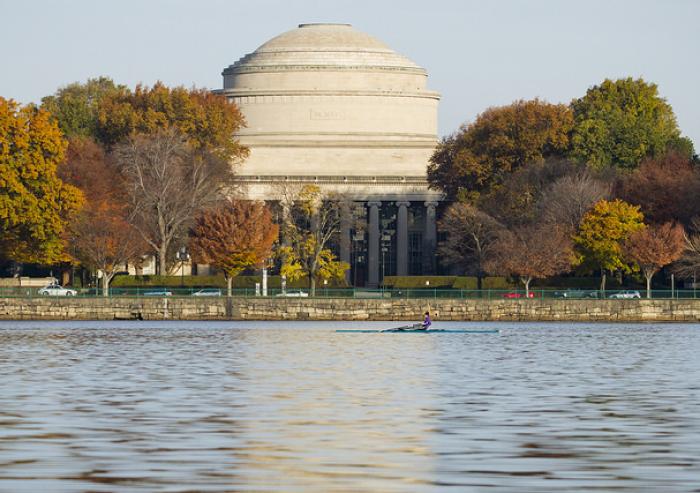Energy hackers give a glimpse of the postpandemic future

After going virtual in 2020, the MIT EnergyHack was back on campus last weekend in a brand-new hybrid format that saw teams participate both in person and virtually from across the globe. While the hybrid format presented new challenges to the organizing team, it also allowed for one of the most diverse and inspiring iterations of the event to date.
“Organizing a hybrid event was a challenging but important goal in 2021 as we slowly come out of the pandemic, but it was great to realize the benefits of the format this year,” says Kailin Graham, a graduate student in MIT’s Technology and Policy Program and one of the EnergyHack communications directors. “Not only were we able to get students back on campus and taking advantage of those important in-person interactions, but preserving a virtual avenue meant that we were still able to hear brilliant ideas from those around the world who might not have had the opportunity to contribute otherwise, and that’s what the EnergyHack is really about.”
In fact, of the over 300 participants registered for the event, more than a third participated online, and two of the three grand prize winners participated entirely virtually. Teams of students at any degree level from any institution were welcome, and the event saw an incredible range of backgrounds and expertise, from undergraduates to MBAs, put their heads together to create innovative solutions.
This year’s event was supported by a host of energy partners both in industry and within MIT. The MIT Energy and Climate Club worked with sponsoring organizations Smartflower, Chargepoint, Edison Energy, Line Vision, Chevron, Shell, and Sterlite Power to develop seven problem statements for hackers, with each judged by representatives form their respective organization. The challenges ranged from envisioning the future of electric vehicle fueling to quantifying the social and environmental benefits of renewable energy projects.
Hackers had 36 hours to come up with a solution to one challenge, and teams then presented these solutions in a short pitch to a judging panel. Finalists from each challenge progressed to the final judging round to pitch against each other in pursuit of three grand prizes. Team COPrs came in third, receiving $1,000 for their solution to the Line Vision challenge; Crown Joules snagged second place and $1,500 for their approach to the Chargepoint problem; and Feel AMPowered took out first place and $2,000 for their innovative solution to the Smartflower challenge.
In addition to a new format, this year’s EnergyHack also featured a new emphasis on climate change impacts and the energy transition. According to Arina Khotimsky, co-managing director of EnergyHack 2021, “Moving forward after this year’s rebranding of the MIT Energy and Climate Club, we were hoping to carry this aim to EnergyHack. It was incredibly exciting to have ChargePoint and SmartFlower leading as our Sustainability Circle-tier sponsors and bringing their impactful innovations to the conversations at EnergyHack 2021.”
To the organizing team, whose members from sophomores to MBAs, this aspect of the event was especially important, and their hope was for the event to inspire a generation of young energy and climate leaders — a hope, according to them, that seems to have been fulfilled.
“I was floored by the positive feedback we received from hackers, both in-person and virtual, about how much they enjoyed the hackathon," says Graham. "It’s all thanks to our team of incredibly hardworking organizing directors who made EnergyHack 2021 what it was. It was incredibly rewarding seeing everyone’s impact on the event, and we are looking forward to seeing how it evolves in the future.”


